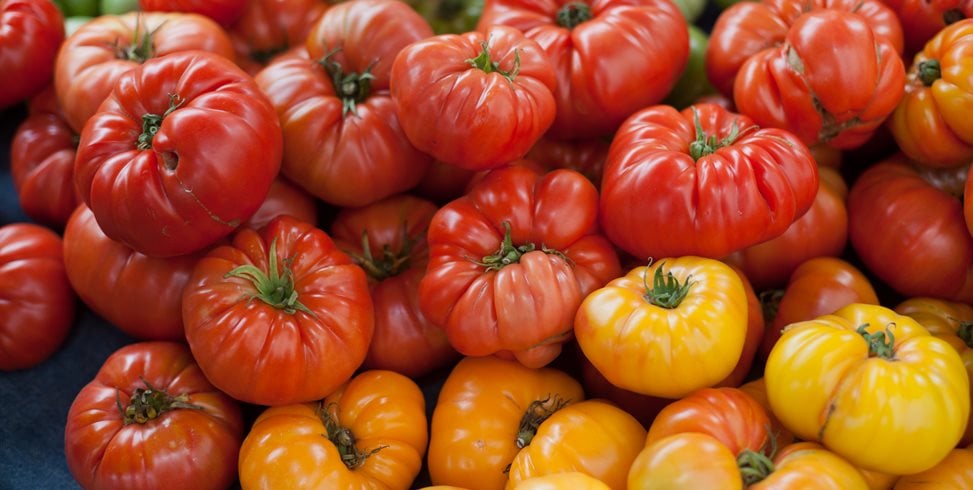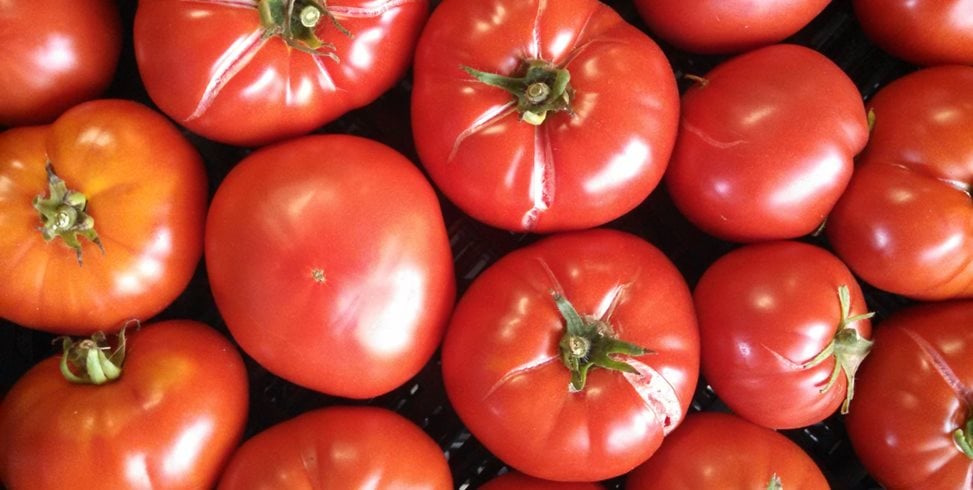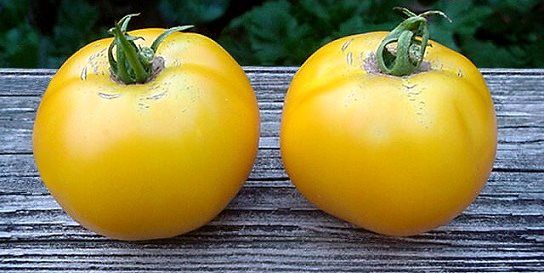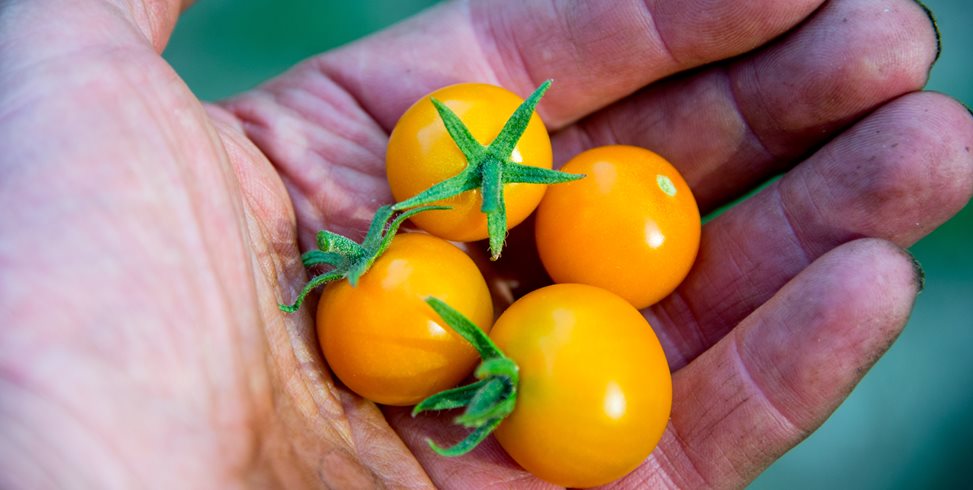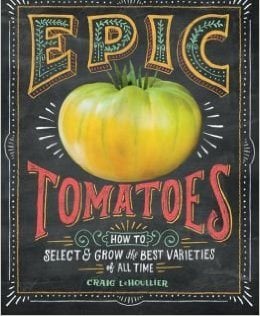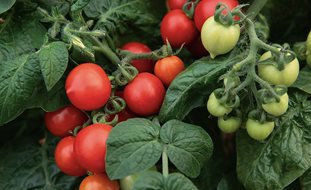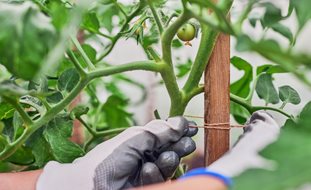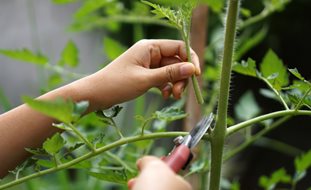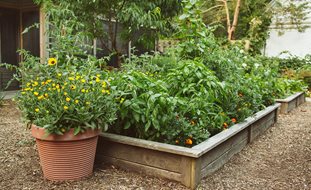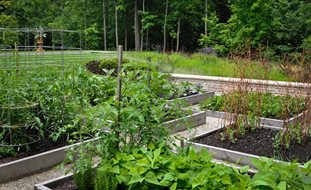Tomato Gardening Tips for Growing Epic Tomatoes at Home
Tomato expert Craig LeHoullier shares his secrets to growing and harvesting the superstars of the summer tomato gardenWhether you say “tomayto” or “tomahto,” you can’t deny that the taste of this fresh fruit picked ripe from the vine is rarely duplicated in the grocery store. It’s no wonder, then, that tomatoes have become the most popular garden vegetable in the U.S., grown by more than 90% of home gardeners.
“Those round, pinkish-red things that are available in the stores bear no resemblance at all to a real tomato. No other type of homegrown produce so far exceeds in quality that which is purchased,” says Craig LeHoullier, author of Epic Tomatoes: How to Select and Grow the Best Varieties of All Time.
In the vegetable garden, tomatoes offer numerous advantages. They can be grown in a small area and in many types of soil, and gardeners can choose from hundreds of cultivars varying in size, shape, color, and days to maturity. In the kitchen, tomatoes have endless culinary uses and are easy to preserve for winter enjoyment.
Best of all, any gardener with the right growing conditions can harvest a bumper crop of beautiful tomatoes. “Everyone who has the desire to grow and taste a tomato that is delicious or colorful or interesting can do so,” says LeHoullier. “Each season, you’ll come away with many successes and a few inevitable misfortunes on which to build and learn.” To help you avoid some of those trials and tribulations, LeHoullier shares ten of his tried-and-true tips for growing perfect tomatoes.
Here are some of LeHoullier’s favorite hybrid and heirloom tomato varieties for the home garden. All are prolific producers with reliable performance. “For my own palate and preferences, these are the cream of the crop. Many tomato gardeners will have their own list of favorites,” he says. Many heirloom tomato cultivars such as Red Brandywine, Cherokee Purple, and Black Cherry are widely available in seed catalogs, giving you the opportunity to rediscover tomatoes from past generations.
Small-fruited tomatoes
Sun Gold
Egg Yolk
Black Cherry
Medium-sized tomatoes
Eva Purple Ball
Little Lucky
Druzba
Lemon Boy (lemon-yellow fruit with mild flavor)
Red Brandywine
Large tomatoes
Cherokee Purple (a beef-steak style tomato with exceptional flavor)
Andrew Rahart's Jumbo Red
Aker's West Virginia
Lucky Cross
Green Giant
Kellogg's Breakfast
Hugh's
Dwarf and container tomatoes
Rosella Purple
Sweet Scarlet Dwarf
Dwarf Sweet Sue
Adelaide Festival
Dwarf Pink Passion
1. Stagger plantings to extend the harvest.
In climates with long growing seasons, staggering your tomato plantings can be used to extend your harvest. It’s best to plan for flowering and fruit set when temperatures are below 90 degrees and the humidity is not extreme to help avoid blossom drop. In areas with short growing seasons, get the plants in as early as possible (after the last frost in spring), and choose varieties with earlier maturities to allow enough growing time for ripening.
2. Avoid overwatering.
If a planting hole, when filled with water, takes hours to drain, it will not make for a happy resting place for tomatoes. A tomato plant with its roots sitting in standing water for hours after a heavy rain could actually die from drowning. Raised beds, well-draining containers filled with a high-quality planting mix, and using straw bales as a planting medium help to improve drainage. While gardeners can take measures to avoid overwatering, periods of heavy rain can also take their toll, especially when tomato plants are bearing fruit. Cracking can happen when partially ripe tomatoes take in more water than they can handle. Picking fruit when it’s half ripe (with a strong blush) prior to cracking is a good solution.
3. Say “hurray” to heirlooms.
If you believe that growing hybrid tomato varieties will give you more reliable results, that’s not necessarily true, says LeHoullier. If you are willing and able to start your own seedlings, heirloom tomatoes will reward you with a greater range of color, shapes, sizes, and flavors. “The non-hybrid/heirloom tomatoes I’ve grown have equaled or out-yielded the hybrids in general with far superior flavors and variety. And that comes with the benefit of being able to save seed for next year’s garden.”
4. Base ripening time on average temperatures.
The days to maturity for the various varieties of tomatoes you find in seed catalogs and garden centers is imprecise and should be used only as a general guideline to when the fruits are ready for picking. Consistently cool weather will delay ripening while long, hot summers advance things considerably, regardless of your growing zone.
5. Provide a good support system.
Tomato plants should be tied to supporting stakes, cages, or a sturdy trellis because they do not have tendrils to support themselves. Vertical support of the plant is also important to prevent soil from splashing onto the foliage, says LeHoullier. When staking tomatoes, put the stake in the ground soon after planting to minimize root damage. Mulch right away to keep the soil off of the lower leaves, a good way to prevent fungal diseases, such as early blight. As the plant grows taller, tie the main stems loosely with rags or twine to avoid damage. Read more about how to stake tomato plants.
6. Read the signs.
Be sure to "read" your tomato plants to see what they need. Wilting on hot days indicate thirsty plants. Foliage losing its deep green hue means it’s time to provide some fertilizer. In hot areas, where insufficient water is often a concern, carefully monitor your plants to make sure they don't wilt during the hottest part of the day, particularly if there are green fruit on the vine. This type of stress can lead to blossom-end rot (black spots on the bottom or blossom end of the tomato). Drip irrigation, good mulching, and regular watering will all minimize this common problem.
7. Prune carefully.
Suckers (side shoots) are always a conundrum, says LeHoullier. The closer together the plants, the more pinching is recommended. But pruning the foliage too severely is risky because you could leave developing fruit unprotected from the direct sun, leading to sun scald. Tomato varieties grown in a cage do not need to be pruned at all, resulting in heavier yields. Be careful not to prune developing flower clusters that grow from the main stem.
8. Do regular health checks.
The topic of tomato diseases and pests can fill an entire book, so it’s wise to familiarize yourself with the diseases most likely to strike in your particular region and deal with issues before they become destructive. Perhaps the most common problem is early blight, a fungal disease characterized by yellowing or spotting of the lower foliage that can work up the plant as the season proceeds. Treatment with a fungicide and removal of the impacted foliage can help slow its progression. Wilting of plant stems, particularly if accompanied by yellow or brown foliage, indicates more serious fungal or bacterial issues, most likely entering the plant via the roots. These plants should be removed and the location marked so that tomatoes are not planted there the following year or two.
The most common tomato pests are not difficult to spot and can be removed by handpicking, especially the tomato hornworm — a large, green monster that can devour your plants with remarkable speed. Using an organic insecticide, such as Thuricide (abbreviated BT), will also help eliminate most pests.
9. Plant them in pots.
Even if you live in a house with a small yard or in an apartmevnt with a sunny deck or patio, you can grow tomatoes. Sturdy pots or plastic or mesh grow bags all work great. The most important factors are providing adequate drainage holes in the bottom, using a high-quality planting mix (typically a mixture of sterilized loam, peat moss, and either perlite or vermiculite, with some added compost or composted manure), and adequately watering and feeding the plants. Daily watering may be necessary in hot climates.
10. Pick them before they fully ripen.
You don’t have to wait until tomatoes are fully ripe before you pick them. In fact, harvesting tomatoes before they turn red also reduces the risk of damage by birds and other garden intruders. Tomatoes can go from partially ripe to nearly overripe quickly, particularly in hot weather. If you pick tomatoes when they have a strong blush and allow them to ripen for a few days on the kitchen counter at room temperature, they will be just as tasty as those allowed to mature on the vine.
Epic Tomatoes: How to Select and Grow the Best Varieties of All Time
By Craig LeHoullier
